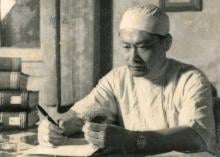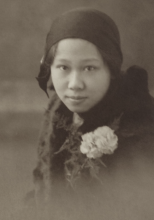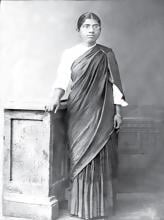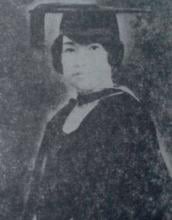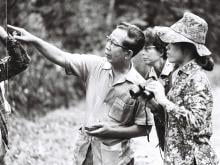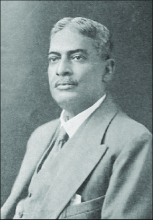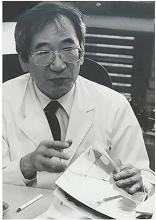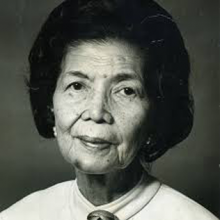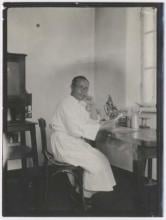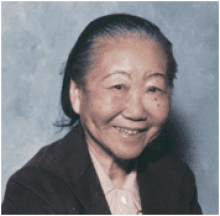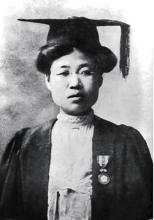Medicine
News

10 Sep 2006
NATURE AND THE NATURE RESEARCH JOURNALS PRESS RELEASE. Summaries of newsworthy papers include RNA interference screens questioned, Bacterial genome provides clues for better bioplastics, Attention can impair visual perception, Regulating the immune response

06 Sep 2006
Wearing light solar-powered GPS satellite transmitters, wild swans from Mongolia are winging their way across Eurasia, while land-bound scientists tracking the birds’ journeys on computers say that these unique studies will shed light on how wild birds may be involved in the spread of avian influenza.

06 Sep 2006
Cell biology: Understanding ageing, Planetary science: Asteroids show signs of ageing, Volcanology: The heat is on explosive eruptions, Cancer: Two faces of p53, Synthetic chemistry: Special protection, Fluid dynamics: Flows stay smooth, Bottom-dwellers use nitrate to survive in mud
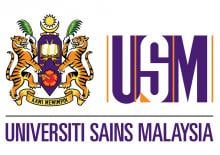
05 Sep 2006
Lymphatic filariasis or commonly known as Elephantiasis is a mosquito borne disease which affects more than 100 million people in 80 countries. Researchers from Universiti Sains Malaysia have developed a rapid test to detect the infection.

03 Sep 2006
Nature Research Journals Press Release. Other newsworthy papers include Molecules as ID tags - Nature Materials; Excess Wnt kills - Nature Immunology

31 Aug 2006
A form of the well-known protein, p53, appears to promote brain nerve fibre regeneration in a mouse model. Simone Di Giovanni and colleagues, publishing in the EMBO Journal, believe this could encourage new routes in the search for treatments for disorders such as spinal cord injury, brain trauma or possibly Alzheimer’s and Parkinson’s.

31 Aug 2006
Cheap IVF could help tackle Africa's infertility problem, Big bursts from smaller stars, Making light of magnetic resonance, Plankton carbon storage was overestimated

29 Aug 2006
Susumu Onishi, former president of Elsevier's health sciences division Excerpta Medica, has joined MMC in Tokyo as consultant director to help build the Japan unit under the leadership of Antoine Bocquet, director of MMC in Japan, who also retains his position as Associate Director of Nature Publishing Group (NPG) in the Asia-Pacific region.

27 Aug 2006
Summaries of newsworthy papers Nature and the Nature Research Journals for papers that will be published online on 27 August 200

25 Aug 2006
HIV in Asia: theological responses and interfaith working, Indonesia introduces the first prison Methadone maintenance treatment in Asia, Youth breaking the ''conspiracy of silence', Explosive epidemic among injecting drug users, New priorities for South Asia, Female condom experiences in Asia and the Pacific, Can Asia learn from Africa?

24 Aug 2006
Seventy top flu scientists and health officials, including six Nobel laureates, today backed a plan to end secrecy over avian flu data: the Global Initiative on Sharing Avian Influenza Data (GISAID).

23 Aug 2006
By plucking single cells from human embryos, Robert Lanza and his colleagues have been able to generate new lines of cultured human embryonic stem (ES) cells while leaving the embryo intact.

21 Aug 2006
The benefits of long-term treatment with statins are well established - they lower cholesterol and prevent heart attacks and strokes. Now a novel beneficial action of statins is reported in a study published online this week in the British Journal of Pharmacology.

20 Aug 2006
In Vietnam, there is a saying “Forest is gold”, sadly, this treasury is being illegally looted. Yet, for thousands of years, every group of people have accumulated experiences of using plants as medicines. The knowledge which is not yet recorded in any books, is at the most serious risk of loss.

20 Aug 2006
New compounds give voice to silenced neural DNA, Quantum paradox predicted to occur in graphene, Spin-flow without electric currents, Fatherhood changes brain anatomy, Fighting Lyme disease, Cystic fibrosis: explaining persistent lung infections, Understanding leukaemia

17 Aug 2006
The main theme of the symposium was “Designing the Future through Sports”, and the sessions focused on issues such as how sports contribute to our society and healthy living, and how we should engage in sporting activities.

16 Aug 2006
The molecular structure of a key avian influenza protein reveals a quirk that could be used to design more potent drugs against pandemic flu; The use of unvaccinated 'sentinel' birds may not always prevent the silent spread of the H5N1 virus through vaccinated flocks

16 Aug 2006
Summaries of newsworthy papers from Nature - Planetary science: Caps off to carbon dioxide on Mars, Microbiology: Unseen Archaea vital to nitrogen cycle, Quantum physics: Taking electrons for a spin, Watching early galaxies take shape

14 Aug 2006
Researchers used this method to investigate in vivo the fate of various adult stem cells transplanted into the mouse ischemic brain. Results indicate that adult stem cells could be used as vehicles to introduce therapeutic genes into the central nervous system in an attempt to support brain recovery.

13 Aug 2006
Neurobiology: Survival of the well-connected, Neuroscience: Protein folding lost in translation, Development: How neurons sprout like trees, Antiviral protein linked to healthier lungs, One recurrent cause of mental retardation found, Fighting flies, A potential new target for antidepressants

10 Aug 2006
Two developments, expanding the potential applications of high-resolution fluorescence imaging, are published online by Nature Methods this week. Both expand the potential applications of ultrahigh-resolution fluorescence imaging, making it more widely accessible.

09 Aug 2006
Summaries of newsworthy papers from Nature. Frozen rocks spotted by X-ray blocking, New technique glimpses half-billion-year-old embryos, Egg donation, compensation and regulation, The case of the missing lithium may be solved, Watching a crystal shake with light, Controlling the super-traffic, Origins of body patterning

08 Aug 2006
This paper gives an overview on the medicinal plants of Vietnam (especially ethnomedicinal plants and medical indigenous knowledge) from the past to present, and their potential value for the development of new medicines in the near future.

06 Aug 2006
A paper published online this week by Nature shows that plants pass down 'memories' of stressful events from parent to progeny, which might help them adapt to difficult conditions. A link between zinc and a critical aspect of normal immune cell function is identified by a study to be published in the September issue of Nature Immunology.

02 Aug 2006
Researchers in Australia are developing a non-invasive way of telling how old a whale is, by scooping up the skin flakes it sheds into the sea, according to a News Exclusive in Nature this week. If they succeed, then one of the key arguments in favour of killing whales for scientific research will be dead in the water.

02 Aug 2006
Press release from Nature. Vol.442 No.7102. Summaries of newsworthy papers include Look smart!, Genetic key to finch beak length, Evidence for plate tectonics in the early Earth, Why galaxies don't get to the point, Peering at the pairs, A rose by any other temperature

01 Aug 2006
Based in Hanoi, CREDEP studies the biodiversity, conservation and sustainable use of medicinal plants and indigenous knowledge resources in Vietnam.

30 Jul 2006
Over the last 10 years, the most prominent developments in clinical medicine were the introduction of gene therapy and minimally invasive surgery. Basic scientific progress was so rapid that practical activities, teaching young fellows, clinical training of residents were left behind.

30 Jul 2006
NATURE AND THE NATURE RESEARCH JOURNALS PRESS RELEASE. Summaries of newsworthy papers include Sulfation code for sugar chains, Genomic blueprint for oil slick cleanup bacterium, Mouse model suggests treatment strategy for muscular dystrophy, Inhibiting inflammation in multiple sclerosis

27 Jul 2006
One of the most controversial chemicals on the planet is set to make a comeback as a prime weapon in the fight against malaria in Africa, reports a special News Feature in the August issue of Nature Medicine.
Researchers
Sorry, no researchers coming up for this topic.
- « first
- ‹ previous
- 1
- 2
- 3
- 4
Giants in history
Vietnamese surgeon Tôn Thất Tùng (10 May 1912 – 7 May 1982) developed a pioneering technique that reduced the risks and mortality rate of liver operations.
Michiaki Takahashi (17 February 1928 – 16 December 2013) was a Japanese virologist who developed the first chickenpox vaccine.
Irene Ayako Uchida’s (8 April 1917 – 30 July 2013) strides to understand genetic diseases such as Down syndrome paved the way for early screening of chromosomal abnormalities in foetuses.
Baron Kitasato Shibasaburo (29 January 1856 – 13 June 1931) was a Japanese physician and bacteriologist whose work led to a new understanding of preventing and treating tetanus, diphtheria and anthrax.
Maggie Lim (5 January 1913 – November 1995) was a Singaporean physician who promoted family planning and expanded the access to clinics to improve the quality of life for mothers and children in Singapore’s early days.
By isolating soil microorganisms and studying the compounds they produce, Satoshi Omura (born 1935) discovered almost 500 organic compounds with unique properties that were produced by these microorganisms, including many new antibiotics.
The founder of the Adyar Cancer Institute in India, Muthulakshmi Reddy (30 July 1886 – 22 July 1968), fought to uplift women and girls from impoverished situations.
Chinese-American virologist and molecular biologist Flossie Wong-Staal (27 August 1946 – 8 July 2020) was the first scientist to clone HIV and determine the function of its genes.
Maharani Chakravorty (1937 – 2015) was one of India’s earliest molecular biologists whose research paved the way for advances in the treatment of bacterial and viral infections.
Archana Sharma (16 February 1932 - 14 January 2008) conducted research into plant and human genetics that expanded the understanding of both botany and human health. In relation to botany, she uncovered the means by which asexually-reproducing plants evolve into new species.
The first Thai woman to receive a degree in medicine, Margaret Lin Xavier (29 May 1898 – 6 December 1932), is best remembered for her compassion towards her less privileged patients.
In 1915, pathologist Katsusaburo Yamagiwa and his research assistant Koichi Ichikawa became the first to prove that chronic exposure to chemicals can cause cancer.
In 1915, Koichi Ichikawa along with pathologist Katsusaburo Yamagiwa became the first to prove that chronic exposure to chemicals can cause cancer.
Husband and wife team, Kimishige (3 December 1925 – 6 July 2018) and Teruko Ishizaka (28 September 1926 – 4 June 2019) discovered the antibody class Immunoglobulin E (IgE) that triggers allergic reactions. They also discovered that IgE antibodies attach to white blood cells, known as mast cells, releasing histamine, which causes allergic reactions.
Husband and wife team, Kimishige (3 December 1925 – 6 July 2018) and Teruko Ishizaka (28 September 1926 – 4 June 2019) discovered the antibody class Immunoglobulin E (IgE) that triggers allergic reactions. They also discovered that IgE antibodies attach to white blood cells, known as mast cells, releasing histamine, which causes allergic reactions.
Japanese chemist Takamine Jokichi (3 November 1854 – 22 July 1922) founded the Tokyo Artificial Fertilizer Company, where he isolated a starch-digesting enzyme (named takadiastase) from the fungus Aspergillus oryzae.
Ground-breaking cancer researcher Kamal Jayasing Ranadive (8 November 1917 – 11 April 2001) advanced the understanding of the causes of leukaemia, breast cancer and oesophageal cancer through the use of animal models. She was also among the first to recognise how susceptibility to cancer is linked to tumour-causing interactions between hormones and viruses.
The research of Filipino pharmaceutical chemist Luz Oliveros-Belardo (3 November 1906 – 12 December 1999) focussed on essential oils and other chemicals derived from native Philippine plants.
Thai physician and conservationist Boonsong Lekagul (1907 – 1992) made major contributions to the preservation of his country’s wildlife.
Indian scientist and physician Upendranath Brahmachari (19 December 1873–6 February 1946) is best known for creating a drug called Urea Stibamine, used to safely and reliably treat visceral leishmaniasis (or Kala-azar), a severe infection caused by the Leishmania parasite.
Filipino chemist and pharmacist Manuel A. Zamora (29 March 1870 – 9 July 1929) is best remembered for his discovery of the tiki-tiki formula to combat beriberi, a disease caused by Vitamin B1 deficiency.
Korean parasitologist Seung-Yull Cho (16 November 1943 – 27 January 2019) is remembered largely for his pioneering works to control infections caused by helminthic parasites and his contribution to journal publishing.
Fe Villanueva del Mundo (27 November 1911 – 6 August 2011) was a Filipina paediatrician who founded the Philippines’ first paediatric hospital.
After witnessing death and suffering as a youth in his home village during World War II, Nguyễn Tài Thu (6 April 1931 – 14 February 2021) set his sights on alleviating pain by becoming a doctor. After studying Traditional Chinese Medicine in China in the 1950s, Thu returned to Vietnam to serve in military hospitals. Eventually, he became the country’s foremost practitioner of acupuncture, a technique he first learned by inserting needles into himself.
Minoru Shirota (April 23, 1899 – March 10, 1982) was a Japanese microbiologist who invented the popular fermented drink Yakult.
Wu Lien-teh (10 March 1879 – 21 January 1960) was a Malaysian-born doctor who invented a mask that effectively suppressed disease transmission. Winning the prestigious Queen’s Scholarship enabled Wu to become the first Chinese student to study medicine at the University of Cambridge.
David T. Wong (born 1936) is a Hong Kong-born American neuroscientist who is best known for discovering the antidepressant drug fluoxetine, better known as Prozac.
Indian organic chemist Asima Chatterjee (1917 to 2006) studied the medicinal properties of plant products, especially compounds known as vinca alkaloids.
Chika Kuroda (24 March 1884 – 8 November 1968) was a Japanese chemist whose research focussed on the structures of natural pigments.
Umetaro Suzuki (7 April 1874 – 20 September 1943) was a Japanese scientist best remembered for his research on beriberi, a disease caused by vitamin B1 deficiency, characterized by limb stiffness, paralysis and pain.
Salimuzzaman Siddiqui (19 October 1897 – 14 April 1994) was an artist and chemist from Pakistan whose research focused on natural products from plants.
Barry Paw (29 August 1962 – 28 December 2017) was a biologist and oncologist who discovered several novel genes and their functions in red blood cells.
Syed Qasim Mehdi (13 February 1941 – 28 September 2016) was a Pakistani molecular biologist who was a founding member of the Human Genome Diversity Project (HGDP), which assessed human diversity by studying human migration, mutation rates, relationships between different populations, genes involved in height and selective pressure.
Tsai-Fan Yu (1911 – 2 March 2007) was a Chinese-American physician and researcher who was the first female full professor at Mount Sinai School of Medicine. She discovered that gout, a condition characterized by the painful inflammation of joints, was caused by elevated levels of uric acid in the bloodstream.
Min Chueh Chang (10 October 1908 – 5 June 1991) was a Chinese-American biologist who studied fertilization in mammalian reproduction.
A Japanese surgeon, Tetsuzo Akutsu (20 August 1922 – 9 August 2007) built the first artificial heart capable of keeping an animal alive.
Ogino Ginko (3 March 1851 – 23 June 1913) was the first registered female doctor to practise modern medicine in Japan.
Esther Park (1877-1910), born Kim Jeom-dong, was the first female Korean physician to practise modern medicine in Korea and trained the first generation of Korean female doctors.


